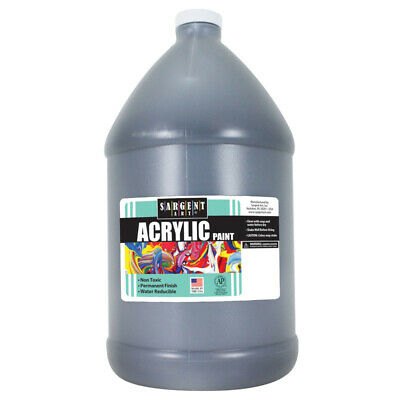-40%
Copper Sulfate - Bluestone prevents metal corrosion and oxidation - CuSO4
$ 2.1
- Description
- Size Guide
Description
Copper Sulfate - Blue StoneTake a look at other Materials for Ceramics!
- Effect Glazes
- Pigments (stains)
- Colour Glazes
- Underglazes
- Lustres (lusters)
- Gold, Platinum, Silver
- Colourless Glazes
- Frits, Tools, Oxides, and Thinners
Formula:
CuSO
4
·
5
H
4
O (C
opper(II) sulfate pentahydrate)
Molar Mass:
249.685 g/mol
Form:
Blue octahedral molecular crystals reveals a polymeric structure
CAS Number:
7758-99-8
Density:
2.286 g/cm³
Synonyms:
Bluestone, Blue vitriol, Bonattite, Boothite, Chalcanthite, Chalcocyanite, CUPRIC SULFATE, Copper(II) sulfate, Copper sulphate, Cupric sulfate anhydrous, Blue stone, Hylinec, Trinagle, Delcup, Incracide 10A, BCS copper fungicide, Bonide Root Destroyer, Kupfersulfat [German]
Description
What is copper sulphate used for? Is copper sulfate used in medicine? Are there Health Risks? What are the benefits of Copper Sulfate
CuSO
4
The bright blue pentahydrate CuSO4·5H2O is the most commonly encountered form of copper(II) sulfate.
As a fungicide and herbicide
Copper sulfate pentahydrate is used as a fungicide.
Bordeaux mixture,
a suspension of copper(II) sulfate (CuSO4) and calcium hydroxide (Ca(OH)2), is used to control fungus on grapes, melons, and other berries.
Cheshunt compound,
a commercial mixture of copper sulfate and ammonium carbonate, is used in horticulture to prevent damping off in seedlings. As a non-agricultural herbicide, is it used to control invasive aquatic plants and the roots of plants situated near water pipes. It is used in swimming pools as an algicide.
Analytical reagent
Several chemical tests utilize copper sulfate. It is used in Fehling's solution and Benedict's solution to test for reducing sugars, which reduce the soluble blue copper(II) sulfate to insoluble red copper(I) oxide. Copper(II) sulfate is also used in the Biuret reagent to test for proteins.
Medicine uses
Copper sulfate is used to test blood for anemia. The blood is tested by dropping it into a solution of copper sulfate of known specific gravity – blood which contains sufficient hemoglobin sinks rapidly due to its density, whereas blood which does not sink or sinks slowly has insufficient amount of hemoglobin.
Its copper ions emit a deep green light in a flame test, a much deeper green than the flame test for barium.
Organic synthesis
Copper sulfate is employed at a limited level in organic synthesis. The anhydrous salt is used as a dehydrating agent for forming and manipulating acetal groups. The hydrated salt can be intimately mingled with potassium permanganate to give an oxidant for the conversion of primary alcohols.
Rayon production
Reaction with ammonium hydroxide yields Tetraamminecopper(II) sulfate or Schweizer's reagent which was used to dissolve cellulose in the industrial production of Rayon.
Niche uses
Copper(II) sulfate has attracted many niche applications over the centuries. In industry copper sulfate has multiple applications. In printing it is an additive to book binding pastes and glues to protect paper from insect bites; in building it is used as an additive to concrete to provide water resistance and disinfectant qualities. Copper sulfate can be used as a coloring ingredient in artworks, especially glasses and potteries. Copper sulfate is also used in firework manufacture as a blue coloring agent, but it is not safe to mix copper sulfate with chlorates when mixing firework powders.
Lowering a copper etching plate into the copper sulfate solution. Copper sulfate was once used to kill bromeliads, which serve as mosquito breeding sites. Copper sulfate is used as a molluscicide to treat bilharzia in tropical countries.
Art
In 2008, the artist Roger Hiorns filled an abandoned waterproofed council flat in London with 75,000 liters of copper(II) sulfate water solution. The solution was left to crystallize for several weeks before the flat was drained, leaving crystal-covered walls, floors and ceilings. The work is titled Seizure. Since 2011, it has been on exhibition at the Yorkshire Sculpture Park.
Etching
Copper(II) sulfate is used to etch zinc or copper plates for intaglio printmaking. It is also used to etch designs into copper for jewelry, such as for Champlevé.
Dyeing
Copper(II) sulfate can be used as a mordant in vegetable dyeing. It often highlights the green tints of the specific dyes.
Electronics
An aqueous solution of copper(II) sulfate is often used as the resistive element in liquid resistors.
Payment and Shipping
You can order another quantity. I always combine the packages. The costs for posting depend of total weight of the package.
No shipping to Argentina, sorry!
Packaging
You'll get the ordered quantity put in a polyethylene bag and labeled with the name.











